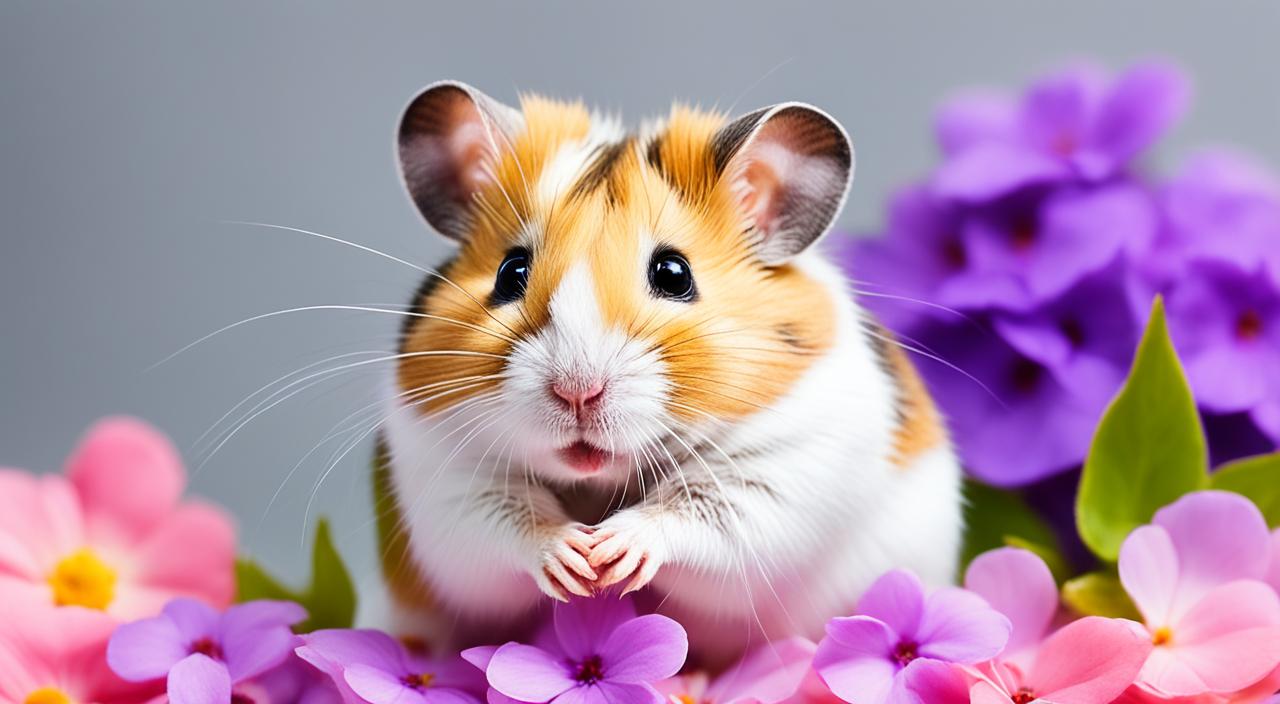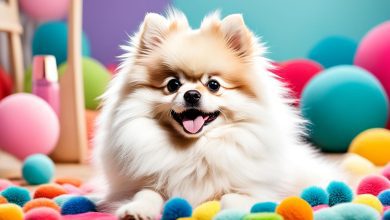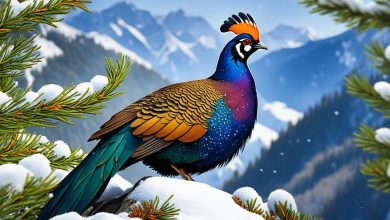I’m a proud owner of a 3.5-year-old Chinese Hamster named Darwin. These pocket pets are truly delightful. They come from northern China and Mongolia. First sold as pets in Beijing in 1900, they’ve become popular companions.
Chinese Hamsters are shy but can be great pets for those who are patient. They are small, slender rodents with long tails and unique coloring. They’re becoming more popular in the U.S., with more being adopted.
Whether you’re new to pets or already love rodents, Chinese Hamsters make great additions. They offer companionship and fun. With the right care, they can become beloved members of your family.
Delightful Origins of the Chinese Hamster
The Chinese Hamster has a fascinating history that goes back to northern China and Mongolia. They were first seen by the world in 1919, brought to the Peking Union Medical College for disease studies. These small animals started their journey as lab animals but soon became popular pets.
Northern China and Mongolia Roots
The Chinese Hamster comes from the tough landscapes of northern China and Mongolia. They lived in these areas, adapting to the climate and terrain. This made them strong and unique, catching the eye of scientists who studied them a lot.
From Lab Specimens to Beloved Pets
In the 1960s, the Chinese Hamster became a hit in Europe as pets. They moved from labs to homes, winning over animal lovers. Now, they are loved in North America, Europe, and China for their sweet nature and special look.
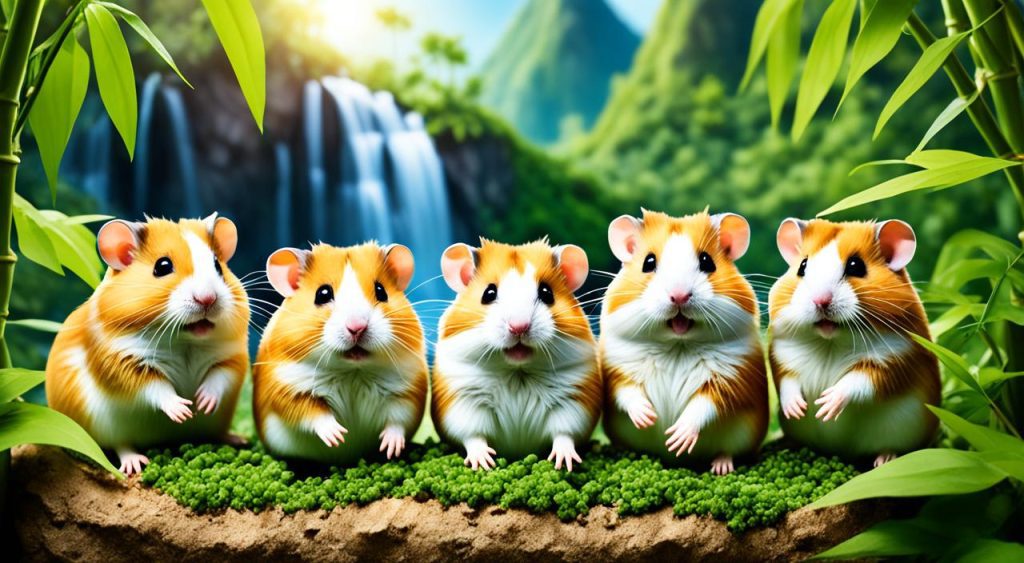
“The Chinese Hamster’s journey from humble lab specimens to beloved companion animals is a testament to their adaptability and the human desire for adorable, unique pets.”
| Fact | Value |
|---|---|
| First Domesticated | Around 1919 |
| Average Size | 4 inches (10-12cm) long, 45-50g |
| Lifespan | 2-3 years |
| Tail Length | 2-3 cm |
| Uses in Research | Infectious disease studies, diabetes research, CHO cell lines |
The Unique Appearance of Chinese Hamsters
Chinese hamsters stand out with their unique looks. They have a slender body and a long, rat-like tail. This makes them look different from other dwarf hamsters.
On average, males are about 4 inches long, and females are a bit shorter. They weigh between 2 to 3 ounces, making them quite small.
They have a special fur pattern called agouti. This pattern gives them dark brown fur on their back and a darker stripe down their spine. Their belly is lighter, usually tan. Some Chinese hamsters can be white with spots, which is less common.
Before, Chinese hamsters were often used in labs. Now, they are loved as pets, especially by females. But in places like California and New Jersey, you need special permits to keep them.
Chinese hamsters are visually striking pets. Their size and look make them great for those wanting a unique and fun pet.
Chinese Hamsters: Tiny but Athletic Companions
Chinese hamsters may be small, but they are full of energy and fun. They are shy at first, but with patience and gentle care, they can become friendly and interactive.
Shy Yet Entertaining Nature
Chinese hamsters are known as the shyest of the dwarf hamsters. They can easily get scared and might hide when you come near. But, they are curious and love to play, making them interesting to watch.
These tiny athletes are super fast and agile. They run around their homes with amazing speed.
Handling with Care and Patience
It’s important to handle Chinese hamsters gently and calmly. They’re not good for young kids because they can be hard to hold safely. Teenagers and adults who take the time to tame them will enjoy special moments of connection.
Chinese hamsters are shy but fun to have around. They need the right care and patience to thrive. By understanding them, you can enjoy their lively and charming nature at home.
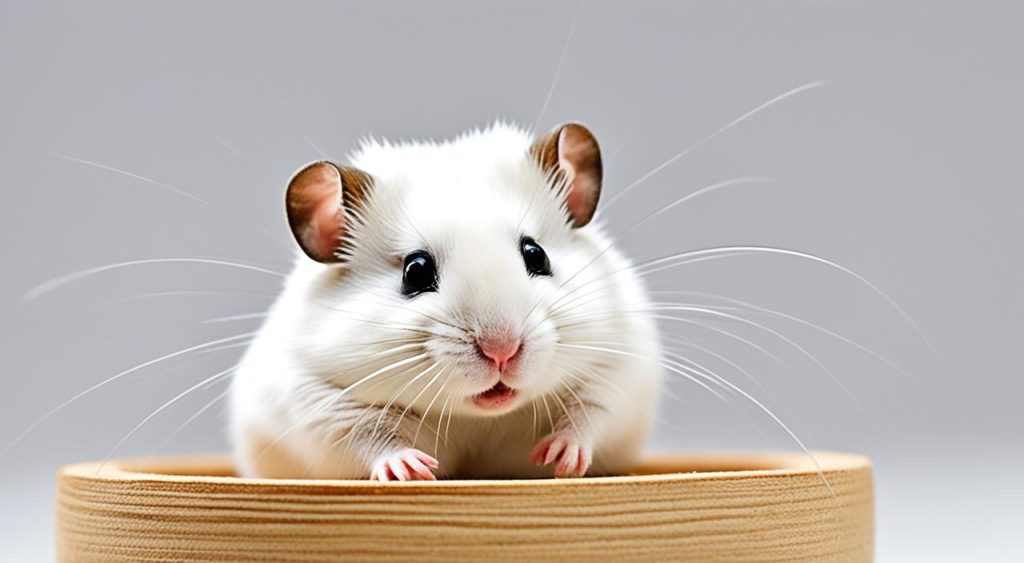
Creating the Perfect Chinese Hamster Habitat
Creating the perfect home for your Chinese hamster is key to their happiness and health. They need a safe, well-designed place to live. Solid cages, like aquariums or plastic habitats, are best for hamster housing. Wire cages can be too easy for them to escape.
Enclosure Size and Setup
Your hamster’s home should have lots of space. It should have at least 650 square inches of open floor space. This lets them move around, dig, and act naturally. Good hamster cages include a 200 qt bin, an Iris Christmas Tree Bin, a 40-gallon breeder tank, or a 75-gallon tank.
Adding the right hamster bedding and accessories is important. Use soft, absorbent bedding like Carefresh, Ectopetbed, or Bedmax. Add hiding spots and tunnels for digging. Don’t forget chew toys and perches to keep their teeth healthy and minds busy.
Burrowing and Hiding Places
Chinese hamsters love to dig and hide. So, give them lots of places to do so. Use cardboard tubes, wooden hides, or hamster-safe tunnels for hiding. A sand bath is also great for their coat health.
With a big, rich, and safe home, your Chinese hamster will be happy and healthy. They’ll live a long, joyful life as your pocket pet.
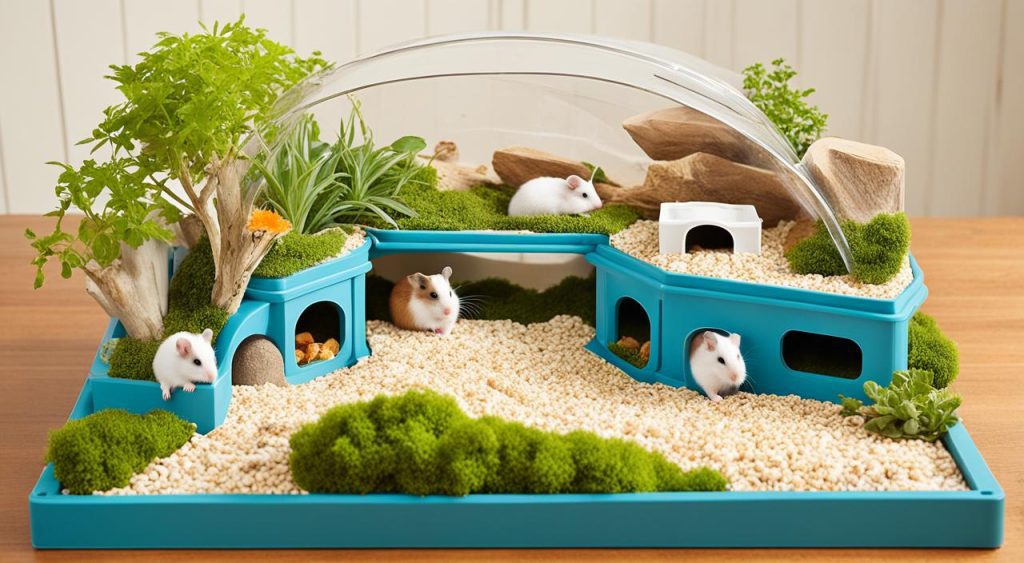
Chinese Hamsters: Adorable Pocket Pets for Your Home
Looking for a delightful and unique small animal companion? Consider the charming Chinese hamster. These pocket pets are not as well-known as some others but have many qualities that make them great for any home.
Chinese hamsters are tiny, measuring 3 to 5 inches long and weighing 1 to 2 ounces. Despite their small size, they are energetic and can form strong bonds with their owners. With the right care, they become gentle and quiet, making them great companions.
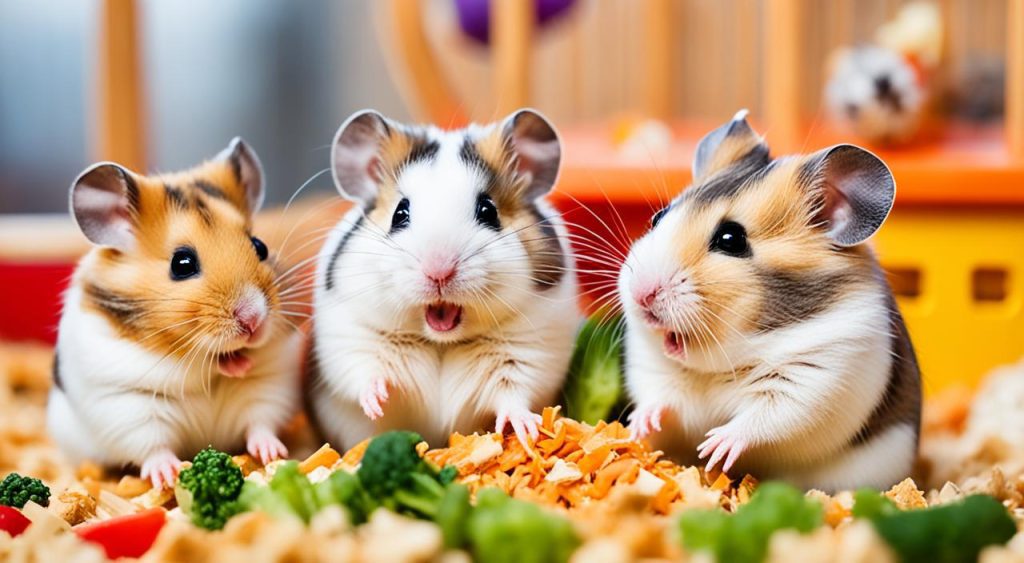
Chinese hamsters are not mini versions of larger hamsters like the Syrian (golden) hamster. They have a unique look with a longer tail and a dark stripe on their back. This look, along with their lively nature, makes them captivating small animal companions and pocket pets.
With the right habitat, diet, and gentle handling, these tiny athletes can thrive. They bring endless joy to their owners. Whether you’re an experienced pet owner or new to chinese hamsters as pets, they could be the perfect addition to your family.
A Well-Balanced Diet for Your Chinese Hamster
Feeding your Chinese hamster a nutritious diet is key for their health. They love a mix of dried fruits, seeds, and some protein-rich treats. Let’s explore how to make a diet that keeps your Chinese hamster happy and healthy.
Nutritious Seed and Dried Fruit Mixes
A high-quality seed and dried fruit mix is the base of their diet. These give them important vitamins, minerals, and fiber. Stay away from muesli-style foods as they can lead to dental problems and weight gain. Choose a mix with small seeds like millet, sunflower, and flax, and dried fruits like apple, pear, and melon.
Occasional Protein-Rich Treats
Chinese hamsters also like some protein-rich treats. Give them small amounts of boiled eggs, cooked chicken, or live insects like crickets or mealworms. These treats offer important nutrients and satisfy their natural foraging instincts.
Always make sure your Chinese hamster has fresh, clean water. They can get dehydrated easily. Spread their food around their cage or hide it in paper bags or cardboard tubes. This encourages them to forage and keeps their minds active.
“A well-balanced diet is the foundation for a healthy and happy Chinese hamster.”
With a diverse and nutritious diet, your Chinese hamster will thrive. They’ll live a long, happy life as your pocket pet.
Keeping Your Chinese Hamster Hydrated
Keeping your Chinese hamster hydrated is key for their health. It’s important to make sure they always have clean, fresh water. Using a water bottle is the best way to do this instead of a bowl.
Hamster water bottles come with a metal spout that makes it easy for your pet to drink. You should check how much water your hamster drinks every day. If they don’t drink enough, they could get dehydrated, which is bad for them. If you’re worried about their water intake, talk to a vet.
- Provide a water bottle with a metal spout for easy access to fresh, clean water.
- Monitor your hamster’s water intake, as their drinking habits can vary day-to-day.
- Consult a veterinarian if you notice any changes in your hamster’s water consumption, as dehydration can be a health concern.
Keeping your Chinese hamster hydrated is important for their health. It’s a key part of caring for small pets. Remember, hamster hydration is vital for these cute friends.
Playtime Fun for Your Tiny Athlete
Chinese Hamsters are super active and love to play! They don’t like running in wheels or balls like some other hamsters. Instead, they enjoy flying saucers that let them run freely. Giving them a big play pen with toys, tunnels, and places to hide is great for their natural behaviors.
Flying Saucers and Play Pens
Give your Chinese Hamsters a big play area with a flying saucer toy. These saucers let them run and explore freely. Also, a play pen with tunnels, ledges, and hidden treats encourages their natural foraging and burrowing.
Foraging for Hidden Treats
Scatter small, healthy treats around the play area for your Chinese Hamster to find. This activity boosts their problem-solving skills and mental exercise. It also makes your bond stronger as they learn to trust and play with you.
FAQ
What are Chinese Hamsters?
Chinese Hamsters are small, slender hamsters from northern China and Mongolia. They were first sold as pets in Beijing in 1900. Later, they became popular pets in Europe in the 1960s. They are known for their long tails and unique agouti patterns.
Where do Chinese Hamsters come from?
Chinese Hamsters come from northern China and Mongolia. They were first used in labs in 1919. Then, they were brought to Europe in the 1960s as pets.
What do Chinese Hamsters look like?
Chinese Hamsters have a slender body and a long, rat-like tail. They grow to be about 4 inches long and weigh 2 to 3 ounces. They have a special agouti pattern on their fur.
What is the temperament of Chinese Hamsters?
Chinese Hamsters are shy and skittish. But with patience, they can get used to their owners. They are very fast and need careful handling to avoid escapes. They make good pets for those who understand their needs.
How should I set up a habitat for a Chinese Hamster?
Chinese Hamsters need a secure, well-designed home. Use solid cages like aquariums or plastic ones. They need lots of space, hiding spots, and chew toys to stay happy.
What should I feed my Chinese Hamster?
Feed your Chinese Hamster a mix of dried fruits, seeds, and pellets. Avoid sugary treats and give them protein-rich foods like grasshoppers or crickets. Always have fresh water available.
How can I ensure my Chinese Hamster stays hydrated?
Keep your hamster hydrated with a water bottle. Watch how much water they drink to make sure they’re not getting dehydrated. If you’re worried, talk to a vet.
How can I provide enrichment for my Chinese Hamster?
Chinese Hamsters love to play. They enjoy flying saucers and play pens with tunnels and toys. Hiding treats in the play area will keep them busy and happy.
